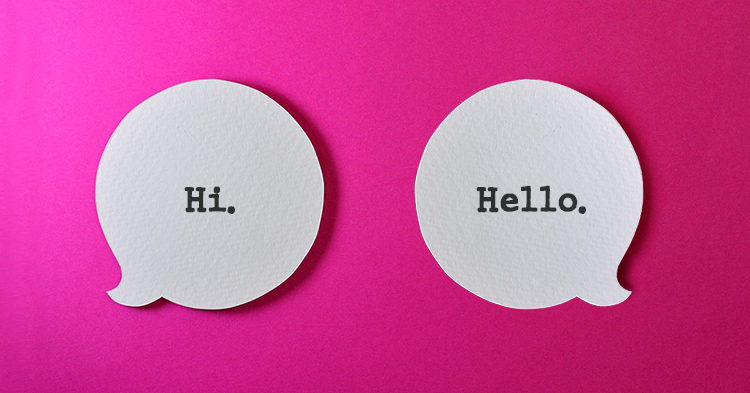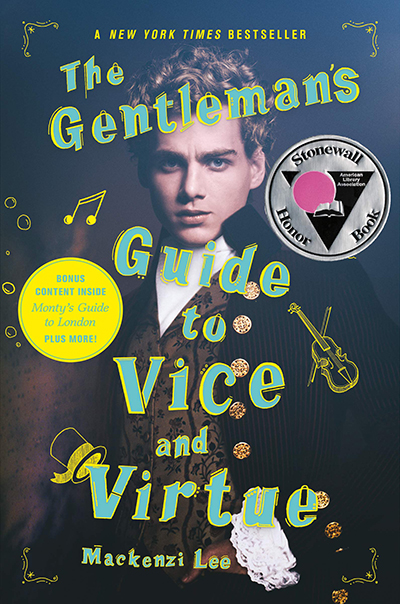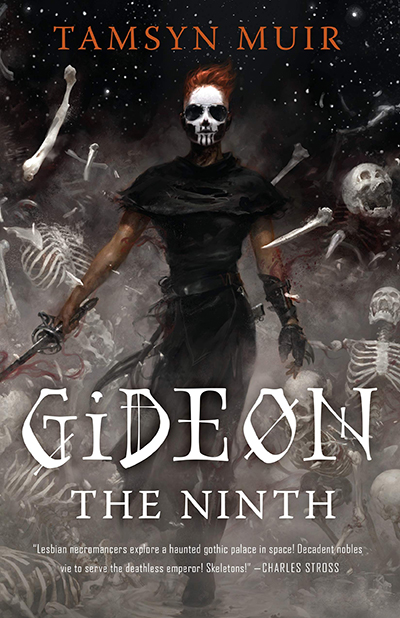How to Write Dialogue in a Book
Now that we’ve explained what a dialogue is, and its purpose, it’s time to discuss how to write dialogue in a book. See, writing the perfect dialogue is an art in itself. That doesn’t mean it’s impossible or exclusive to proficient writers, but it requires some craftiness on your part.

There are many who consider dialogues to be the easiest part of book writing, while others consider it the most difficult. But it all comes down to knowing how to come up with the perfect conversation between two or more people. That’s what we’re here today to explain, all the things you need to keep in mind when writing dialogue.
Keep in mind that this blog post is part two of our series on writing dialogue. You can head on to What is a Dialogue for part one.
So, how to write dialogue in a book then?
1. Take Care of Dialogue Tags
A very important part of writing dialogue is coming up with the right dialogue tags. But what are those tags in the first place? Well, they are words that help show the reader who spoke each part of the dialogue and how they spoke. The most common are, ‘he said/she said’.
The thing is, sometimes it would be nice to use other dialogue tags to add diversity and make the dialogue more rich and interesting. Changing things around can spice your writing up a bit. You can replace them with one of these tags:
- Responded
- Explained
- Inquired
- Asked
- Clarified
- Cried
- Whispered
- Remarked
- Replied
- Acknowledged
- Admitted
- Yelled
- Argued
- Blurted
Something to keep in mind is that there’s a rather big debate when it comes to diversifying the dialogue tags. Some believe writers should stick to ‘said’ and ‘asked’, others believe they should use different and more descriptive dialogue tags such as the ones from the list above.
Those who promote using only ‘said’ and ‘asked’ believe that using different ones all throughout your book will only distract the reader. With so many verbs, they’ll lose touch with what’s actually happening in the scene.
Those against using ‘said’ all the time believe that overusing it shows poor writing skills. Using other dialogue tags would help readers better visualize the scene and how the speaker said whatever they did.
So what is there to do now with these two conflicting views? Well, the best thing to do is to do both. Using ‘said’ is a classic writing technique and certainly expected. It makes absolutely no sense to forgo it altogether and overwhelm the reader with so many alternatives. Instead, go with ‘said’, and sporadically sprinkle words from the list above now and then to spruce things up with your writing.
2. Ensure the Dialogue Sounds Natural
The worst part of dialogue is when it doesn’t sound right. Many people make the mistake of forgetting that dialogue is a conversation. It’s not a place for you to show off your writing skills and ability to spin magic with your words.
Remember, dialogue is an actual conversation. As such, it should sound natural and not like a stilted exchange between two or more people. Take this, for example:
“Have you not heard our mother call out your name, Kayla? She must be in dire need of your help in the kitchen. I behoove you to go to her at once!” said Ryan.
Now imagine this example as part of a contemporary YA novel. How does this sound to you? I’ll answer that. It sounds ridiculously bad. Who even talks like that these days? A better way to write such a scene would be:
“Kayla, can’t you hear mom calling you? She probably needs your help in the kitchen. Why don’t you go see what she wants?” said Ryan.
Doesn’t this sound better? More human and less robotic? That’s the key to writing dialogue, make it sound like humans are actually talking to one another. Of course, you can ignore this advice if your book is about robots.
There are various things you can add to the conversation to improve upon it, like using specific pop culture references and words from a specific dialect or slang words.
Take the manga Naruto for example. The author, Masashi Kishimoto had given the protagonist, Naruto Uzumaki, a weird way of speaking where. He ended almost all of his sentences with ‘dattebayo’, which many characters commented on as rude. Another character that had their own quirk would be Shikamaru Nara, who even though an incredible tactician, didn’t like to apply himself. He often referred to everything that required effort on his part as ‘troublesome’, which played a part in showing the readers parts of his personality.
In any case, the best way to see if the dialogue flows and sounds natural or not is by reading it out loud. Whether by yourself or with the help of a friend, you can read the lines and see if they sound right.
3. Show Character
One mistake a lot of authors make is that their dialogue doesn’t change with each character. Inadvertently, all the characters end up sounding the same and are hardly distinguishable from one another. Believe it or not, this is rather offputting for readers as all the characters end up mixing with one another, making it hard for them to remember who said what. It also shows a lack of skill on your end as a writer.
The key to avoiding that is to ensure you give each character a distinct voice and mannerisms that are apparent when they speak. This can mean differences in their tones of voice, which will show in the tags used, the words they say, and whatever unconscious movements or gestures they make.
You can also add on to their characteristics, such as if they are known to be smart-mouthed and always cause trouble. You can showcase that with the use of cuss words occasionally. Or you can make them sound sassy or petulant. If they’re funny and witty, you can add a lot of banter and hilarious exchanges between the characters.
Let’s take this example from The Gentleman’s Guide to Vice and Virtue by Mackenzi Lee. Henry ‘Monty’ Montague is a troublesome fellow with a rather careless nature. In this scene, he, his best friend Percy, and his sister are being chased and they can’t fathom why. One of their would-be captors claims they’re searching for a smuggler.

“Oh no.”
Percy looks sideways at me. “Oh no what?”
I swallow. “I’d first like it to be noted that I am most certainly not a smuggler.”
“Monty…” he says, my name sopping with dread.
“And,” I continue overtop him, “I’d like you to both remember just how much you adore me and how dull and gloomy your lives would be without me in them.”
“What did you do?”
It’s apparent here, from their reactions, that they’re used to Monty causing trouble, and he’s used to sweet-talking his way out of things. Which he tries to do before he explains he might know what their captors are talking about. This scene also helps promote the adage of show don’t tell. So here, you can see through this conversation the relationship between the characters, their interactions, and their behaviors.
4. Avoid Small Talk
While small talk is normal in real-life conversations, it’s better to avoid it when writing your dialogue. It doesn’t tend to add much value to the story or grip the reader’s attention. In fact, it might even bore them and make them lose interest in the story as a whole.
Imagine the following conversation:
“Why James, hello!”
“Oh, Rachel, hi.”
“How have you been?”
“I’ve been good, and you?”
“I’ve been good as well. How’s work?”
“Work has been hectic. How about yours?”
“The same. There’s always much to do.”
We’ll stop here, but you get the picture. Unless you’re trying to get something out of the ‘small talk’ it’s better to avoid it altogether and start the dialogue from the interesting part.
Like we said, though, sometimes you might want to add small talk to your dialogue. That is when you want to prove a point or showcase a particularly awkward interaction.
Say, a couple met for the first time in years since their breakup. That’s bound to be tense and very emotional. Maybe they’re meeting with a new significant other in tow, adding to the awfulness of the situation. Whatever the matter may be, small talk would be appropriate, especially when splattered with the right dialogue tags to intensify the situation and have the reader on tenterhooks.
However, if that’s not the case, then skip it and head straight to the good stuff.
5. Keep Speeches Short
As with the small talk, lengthy speeches can be just as bad. Each reader has a specific attention span, and boring them in the midst of chunky text won’t benefit you in any way.
Yes, there are often times where your characters will be forced to explain something. Maybe the rest of the characters will even expect details. However, as much as that makes sense in theory, in practicality, it can have a very negative effect.
Don’t let one character monopolize the conversation. Make sure it volleys goes back and forth in equal measure if possible. If not, then add some interjections from other characters to break the monotony of one character rambling on.
Whether they’re just conversation fillers or ways to show how the rest of the characters are absorbing this information, it doesn’t matter. Maybe make another character interrupt the conversation with questions or arguments.
While not part of the dialogue, you can fill in the moments as the speech goes on. Maybe add some action beats and make them descriptive to show how everyone around the speaker is taking in their words. Perhaps they’re intrigued and even writing it down. Or perhaps they’re bored and rolling their eyes or snoozing.
The primary goal is to set the scene, describe the atmosphere, and give your reader a break from the long speech. All the while helping them absorb and be intrigued by the information they’re imparting.
6. Don’t Write Full Sentences
Another common mistake when writing dialogue is that authors think it follows the same rules as writing in general, which is not true. Dialogue comes with its own rules, and one of them is that you don’t have to write in full sentences.
Let’s face it, we don’t necessarily talk in full sentences. We don’t have the presence of mind when talking to ensure we’re grammatically correct in everything we say. We just talk. It’s as simple as that. That means the same goes when writing dialogue. You need to make sure it flows smoothly and sounds just as effortless as a normal exchange between people.
Take this argument from Gideon the Ninth by Tamsyn Muir, for example. Gideon and Harrow are having a disagreement because Harrow has been keeping secrets from her and it’s making her look bad.

“There was no—”
“No. It’s Gideon Nav Talking Time. I want to get out of here and you want to be a Lyctor,” she said. “We need to get in formation if that’s going to happen. If you don’t want me to ditch the paint, this sword, and the cover story, you’re taking me down there with you.”
“Griddle—”
“Gideon Nav Talking Time. The Sixth must think we’re absolutely full of horseshit. I’m going down there with you because I am sick of doing nothing. If I have to wander around faking a vow of silence and scowling for one more day I will just open all my veins on top of Teacher. Don’t go down there solo. Don’t die in a bone. I am your creature, gloom mistress. I serve you with fidelity as big as a mountain, penumbral lady.”
Harrow’s eyes flickered open. “Stop.”
“I am your sworn sword, night boss.”
“Fine,” said Harrow heavily. Gideon’s mouth was about to round out the words “bone empress” before she realised what had been said. The expression on the other girl’s face was now all resignation: resignation and exhaustion and also something else, but mostly resignation. “I acknowledge your argument,” she said. “I disagree with it, but I see the margin of error. Fine.”
It would have been pushing her luck to point out that there was no real way Harrowhark could have denied her; she had the key, the upper hand, and significantly more blood. So all she said was, “Okay. Great. Fine.”
The author was able to portray Gideon’s anger as she won’t allow Harrow the chance to talk. She could also show us Gideon’s appeasement with the last sentence. People amid conversation can sometimes be interrupted or trail off, lost in thought. They can hesitate and use one-word answers. All of that is considered perfectly fine in dialogue.
7. Don’t Overdo It
Last but not least, comes one of the most important points when writing dialogue. You shouldn’t overdo it. Too much dialogue and lack of narration and pacing can have a very adverse effect on your story.
Narration helps build the setting and set the atmosphere. It’s what helps the reader understand what’s going on. It also gives you the perfect chance to explain things better and in more detail.
Dialogue can only do so much within the story. You must balance it with other elements to improve your reader’s understanding and overall experience. So the best thing to do here is to intersperse the dialogue and only add it when it seems vital to the story. Or, to break up enormous chunks of information that the reader has to absorb. These chunks can be rather intimidating to readers, which is why dialogue can be such a relief to them.

Conclusion
Writing dialogue is not a simple task. There are so many ways for it to go wrong. That is why some authors dread it. At the same time, some authors relish in writing it.
Being a wonderful conversationalist, quick with quips and witty retorts might come in handy. But it’s not necessary for you to perfect the skill. It might take some work, but if you follow these seven tips, it will help you acquire this skill easily enough.
Watch out for the third part of our dialogue series, where we’ll tell you how to properly format your dialogue.
Read more here.
10 Tips To Make Your Dialogues Memorable
15 Successful Black Authors You Need to Know
7 Steps You Need to Follow to Write Your Ebook















